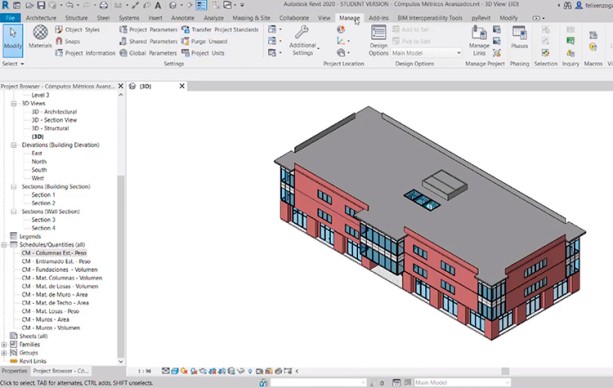Wondering what means what in BIM? For that occasion, we recommend that you check out our BIM Glossary with the most important expressions each professional who wants to sit in the decision-making tables should know.
Being a successful BIM professional comes with an extensive know-how of terminology.
The global aim of BIM is to enhance the collaboration, hence, most of the essential BIM vocabulary is related to collaborative processes. In the following article, we will focus on the most popular concepts, so for a more complete compendium of terms you can check out the
BIM Dictionary that comprises over 700 BIM terms. Marzia Bolpagni, a professor of the
Master’s in Global BIM Management, is among the collaborators of this project as an Assistant Editor.
openBIM
OpenBIM can be summed up as a format that allows all project stakeholders to access the information model without hindering the native design. It is a universal approach that refers to working with open standards, like IFC, BCF and others, developed to facilitate the collaboration starting from the design phase and to realize and operate the buildings based on those standards.
BIM workflow
Workflow refers to major successive activities that must be performed, decision gates that must be passed through, and delivery milestones that we wish to reach. We can divide BIM workflows into two major types:
Internal or Collaborative. Any BIM workflow is typically part of a larger process and might need to be accompanied by several documented procedures as it fulfills strategic or operational objectives.
Interoperability
Interoperability is the ability of two or more systems to exchange information, meaning that the interfaces of a product or system could be completely understood when working with other products or systems without any restrictions. I
nteroperability is considered one of the pillars of working with BIM since we must make sure that the information is exchangeable between all the stakeholders.
IFC
IFC stands for "Industry Foundation Classes" and refers to a standardized, digital description of the built environment (both buildings and civil infrastructure). IFC is an open, international standard (ISO 16739-1:2018), that is designed to be vendor-neutral. That means IFC
can be used in different hardware devices, software platforms, and interfaces. The IFC schema specification is the primary technical deliverable of
buildingSMART International to fulfill its goal to promote openBIM®.
Authoring tools
BIM authoring tools are tools that designers, 2D to 3D conversion teams, and subcontractors use to create the actual model. These tools can be used during the design phase until the construction documentation phase. BIM is not about one particular program or software supplier, it implies collaboration, interoperability, circular workflows, project coordination, etc.
Parametric Model
The
parametric model refers to 3D models that permit the end-user to manipulate objects/elements using explicit parameters, rules, or constraints. Parametric rules create relationships between different elements of the design and store lots of information within the data-objects similar to cost, model, fire rating, etc. In general, BIModels are parametric and follow rules of inheritance, such as Types and Instances.
Generative Model
Generative Models are different from Parametric Models and can
only be loosely labeled as BIModels. Generative Design is a programming-based approach for Architecture, however, in most cases, they were thought for traditional CAD tools and are not the best fit for the BIM paradigm. They are generated using algorithmic functions manipulated by the end-user for form-finding processes, where computational methods are used to drive shape generation, what-if scenarios, and structural optimization.
BIM maturity level
When we speak about BIM Maturity Levels, it's not the same as the UK industry BIM Levels. It's the range of levels that BIM modeling can take represented by a set of
well-defined milestones that cover the extent of BIM Maturity within an organization, Project Team or the whole market. The progression from lower to higher levels of BIM Maturity indicates better control, better predictability and greater effectiveness in reaching defined goals and setting new more ambitious ones.
Level of Development (LOD)
LOD is a BIM metric that enables practitioners in the AEC Industry to specify with clarity the content and reliability of their models at various stages in the design and construction process. Content, in this context. refers to geometric information, structured data and linked documentation. Reliability, on the other hand, means the uses and the extent to which the accuracy and quality of the information can be trusted.
Digital twin
A Digital Twin is a digital representation of a physical asset. Usually created in parallel to its physical counterpart, it spans all the phases of the Plan-Build-Operate-Integrate lifecycle. In the plan and design phase of a project, Digital Twin is a method for better planning, design, and construction of a project. At later phases of the lifecycle, Digital Twins provide long-term benefits for asset performance, optimization, and reliability opportunities. Alternatively, Digital Twins can also be created after a physical version of it already exists, during its use phase, meaning that
physical assets can be digitized when in operation.
BIM Execution Plan (BEP)
A BIM execution plan is a comprehensive document that helps the project team manage the status, timeline, delivery, and completion of a project. BEP defines the foundational framework that ensures the successful deployment of advanced design technologies.
COBie
Construction Operations and Building Information Exchange is a method for exchanging information in a structured format. During the project, data related to design, construction, operation, demolition, etc. can be added to it.


